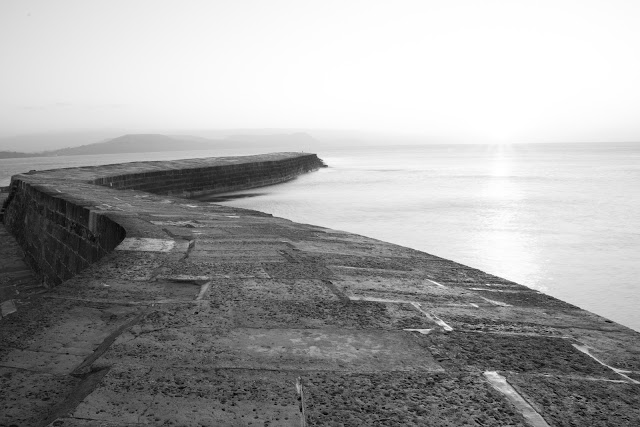Life in the time of the West Country Rebellion
By Mary Anne Yarde
 |
| James Scott, 1st Duke of Monmouth by Willem Wissing |
The West Country
Rebellion or the Monmouth Rebellion as it is more commonly known, was an attempt
by James Scott, 1st Duke of Monmouth (the illegitimate son of Charles II) to
overthrow his uncle, James II.
Monmouth had
always been a popular figure in the South West of England. So he confidently
landed in Lyme Regis on 11th June 1685. From here he planned to recruit an army
amongst his loyal supporters and march on London. By the 15th June, he had a
force in excess of 1,000 local supporters. But the King heard of his plans and
sent the army to deal with this troublesome nephew. So instead of heading to
London, Monmouth headed to Somerset. By the time he reached Chard, he had 6,000
men marching with him. Many of these were farmworkers armed only with pitchforks.
 |
| The famous Cobb at Lymn Regis harbour. |
On the 20th June, Monmouth, who was ever confident, was crowned King in Taunton, even though his uncle still sat on the
throne. Despite a King’s force of Dragoons who
attempted to stop more men joining Monmouth’s ranks, Monmouth
recruited a further 800 men to his
cause. It was assumed by the King’s forces that Monmouth’s next stop would be at
Bristol. Bristol at the time was the largest city after London.
Monmouth and his
army continued to travel north, via Bridgwater. Here he took up residence in
Bridgwater Castle. From here Monmouth travelled to Glastonbury, Shepton Mallet
and Keynsham. His intention had indeed been to take Bristol, but to his dismay,
he learnt that Henry Somerset, 1st Duke of Beaufort had got there before him. There were a few skirmishes, but Monmouth overestimated
the royalist force in Bristol and retreated. Monmouth then marched his army
towards Bath. They camped at a small village called Philips Norton (Norton St. Philip). Monmouth set up his headquarters at the village tavern.
 |
| The tavern where Monmouth set up his headquarters. The George Inn is the oldest tavern in England and it has yet to call last orders! |
On the 27 June, Henry FizRoy Duke of Grafton (half-brother to Monmouth) led his men into the village. Monmouth was waiting for them. It is said that the blood flowed down Chevers Lane like a river. And in fact, Chevers Lane is now known as Bloody Lane. Grafton’s men retreated, scrambling through the hedges in a desperate bid to get away from the slaughter. This battle in the village is remembered today as The Pitchfork Rebellion.
 |
| Henry FizRoy Duke of Grafton later betrayed James II and joined William of Orange in the Glorious Revolution of 1688 |
Monmouth then marched his army overnight to Frome, but the morale of Monmouth's army took quite a blow with the news that the Scottish rebellion had failed. And Monmouth’s found to his dismay that his supporters began to desert him.
 |
| Route of Monmouth's army |
Monmouth took his
men to Warminster, but he was cut off at Trowbridge, so turned back and headed
towards Shepton Mallet. But by then the Royalist forces had captured Monmouth’s
ships which cut of any escape back to the continent.
Monmouth's next stop was in Wells.
The army was quartered in Wells Cathedral and did considerable damage in their short stay there.
 |
| Wells Cathedral |
Monmouth and his
army were finally defeated at the Battle of Sedgmore on 6th July. Monmouth fled
but was found by the King's forces two days later hiding in a ditch.
 |
The
Morning of Sedgemoor (1905) by Edgar Bundy
Monmouth’s
loyal supporters faced the terror of The Bloody Assizes. The Assizes
started in Winchester on the 26th August. The first to fall victim was an
elderly woman. The court then proceeded to the West Country. Judge Jefferies —
The Hanging Judge — entered Philip Norton and turned the tavern, where Monmouth
had once set up his headquarters, into a courtroom. He oversaw 12 executions on
the village common. From here the court headed to Salisbury, Dorchester and
then onto Wells. Many were imprisoned in the cloisters of Wells Cathedral. 1400 Monmouth supporters were tried in these courts. 330 of
which were hung, drawn and quartered.
As for Monmouth, he pleaded for clemency. But there was no forgiveness to be found. He was accompanied by Bishop Thomas Ken of Wells Cathedral, to Tower Hill where he was beheaded. It was not a
merciful beheading. It took multiple blows to separate his head from his body.
He died on the 15th July 1685. He was 36 years old.
Mary Anne Yarde is the multi award-winning author of the International Bestselling Series — The Du Lac Chronicles. Set a generation after the fall of King Arthur, The Du Lac Chronicles takes you on a journey through Dark Age Briton and Brittany, where you will meet new friends and terrifying foes. Based on legends and historical fact, The Du Lac Chronicles is a series not to be missed.
Mary loves to hear from readers, you can always find her here! You can also find her on Twitter and Facebook



If Monmouth had taken Bristol, history would have had a very different narrative.
ReplyDelete